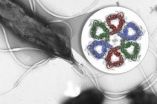(Press-News.org) (ATLANTA, December 10, 2012) – A survey highlighting the correlation between today's cutting edge medical research and the National Institutes of Health (NIH) funding was released today at the 54th Annual Meeting of the American Society of Hematology (ASH), the preeminent medical meeting for physicians and scientists in hematology that draws more than 20,000 attendees from around the world. The survey, representing responses from 1,040 abstract presenters from the U.S. and abroad, demonstrates how critical NIH funding has been to the success of science and medicine.
"Every year researchers and doctors across the globe look to the ASH annual meeting for breakthrough science," said ASH President-Elect Janis Abkowitz, MD of the University of Washington School of Medicine in Seattle. "With nearly two-thirds of the U.S. presenters at this year's annual meeting reporting that they rely on NIH funding, this survey shows unequivocally that those breakthroughs depend on NIH investment."
Survey data also show that in addition to funding current research, a greater number – 86 percent of American abstract presenters – report that they had referenced an NIH-funded study for their own research over the course of their careers. In addition, the survey reveals a high level of concern among scientists and physicians about the impact of reduced NIH funding. Of the U.S. respondents, 75 percent said that when it comes to medical research and development, they are "extremely concerned" (responses on a scale from 1 = not concerned to 5 = extremely concerned) about the threat of NIH budget cuts and the impact on their future careers.
"As a young investigator, I am dependent on the NIH to help fund my research," said ASH member Manali Patel, MD, MPH, a Postdoctoral Hematology/Oncology Medical Fellow at Stanford University who focuses on cancer quality and disparities research. "I love my research and would love to continue it, but am unsure where the direction of research funding is heading and very wary of the impact of NIH funding on my future career."
The survey also shows that the impact of NIH funding goes well beyond U.S. borders. In fact, 52 percent of international presenters said that they have referenced an NIH-funded study for their own research and 22 percent report being "extremely concerned" about the threat of NIH budget cuts.
###
ASH released this data in conjunction with their Fight for Hematology campaign to draw attention to the critical role of NIH funding to medical research. To learn more about the campaign and read stories by ASH member researchers and physician scientists on the impact of budget cuts to NIH funding, visit http://hematology.org/FightNow
Survey shows breakthrough medical research relies heavily on NIH funding
63 percent of American respondents presenting at the American Society of Hematology annual meeting used NIH funding to support their study
2012-12-10
ELSE PRESS RELEASES FROM THIS DATE:
The image of mental fatigue
2012-12-10
We all perhaps know the feeling of mental exhaustion, but what does it mean physiologically to have mental fatigue? A new study carried out using brain scans could help scientists uncover the neurobiological mechanisms underlying mental fatigue.
According to Bui Ha Duc and Xiaoping Li of the National University of Singapore writing in a forthcoming issue of the International Journal Computer Applications in Technology, mental fatigue has become commonplace as many people face increasing mental demands from stressful jobs, longer working hours with less time to relax and ...
Researchers demonstrate that a saliva analysis can reveal decision-making skills
2012-12-10
A study conducted by researchers at the University of Granada Group of Neuropsychology and Clinical Psychoneuroimmunology has demonstrated that cortisol levels in saliva are associated with a person's ability to make good decisions in stressful situations.
To perform this study, the researchers exposed the participants (all women) to a stressful situation by using sophisticated virtual reality technology. The study revealed that people who are not skilled in decision-making have lower baseline cortisol levels in saliva as compared to skilled people.
Cortisol –known ...
Experiment finds ulcer bug's Achilles' heel
2012-12-10
Experiments at the U.S. Department of Energy's (DOE) SLAC National Accelerator Laboratory have revealed a potential new way to attack common stomach bacteria that cause ulcers and significantly increase the odds of developing stomach cancer.
The breakthrough, made using powerful X-rays from SLAC's Stanford Synchrotron Radiation Lightsource (SSRL), was the culmination of five years of research into the bacterium Helicobacter pylori, which is so tough it can live in strong stomach acid. At least half the world's population carries H. pylori and hundreds of millions suffer ...
Frankincense is for life, not just for Christmas
2012-12-10
At this time of year it is hard to escape the Three Wise Men, riding their camels across Christmas cards and appearing in minature form in countless school nativity plays across the world, bearing their gifts for the infant Jesus. Whilst we are all familiar with gold (especialliy in this Olympic year), it is the mention of frankincense and myrrh that really says "Christmas" to us and and takes our imaginations back to ancient times. But you might be surprised to learn that these two fragrances are still big business today; for example, Ethiopia alone trades around 4000 ...
Oxytocin produces more engaged fathers and more responsive infants
2012-12-10
Philadelphia, PA, December 10, 2012 – A large body of research has focused on the ability of oxytocin to facilitate social bonding in both marital and parenting relationships in human females. A new laboratory study, led by Dr. Ruth Feldman from Bar-Ilan University in Israel and published in the current issue of Biological Psychiatry, has found that oxytocin administration to fathers increases their parental engagement, with parallel effects observed in their infants.
Oxytocin is a neuropeptide that plays an important role in the formation of attachment bonds. Studies ...
Onion soaks up heavy metal
2012-12-10
Onion and garlic waste from the food industry could be used to mop up hazardous heavy metals, including arsenic, cadmium, iron, lead, mercury and tin in contaminated materials, according to a research paper published in the International Journal of Environment and Pollution.
Biotechnologists Rahul Negi, Gouri Satpathy, Yogesh Tyagi and Rajinder Gupta of the GGS Indraprastha University in Delhi, India, explain how waste from the processing and canning of onion (Allium cepa L.) and garlic (Allium sativum L.) could be used as an alternative remediation material for removing ...
Ultrasound can now monitor the health of your car engine
2012-12-10
A system that uses ultrasound technology to look inside car engines could lead to more efficient engines – and huge fuel savings for motorists.
Ultrasound scans have long been a fundamental tool in healthcare for looking inside the human body, but they have never before been put to use in testing the health of a modern combustion engine.
In the University of Sheffield's Department of Mechanical Engineering, Rob Dwyer-Joyce, Professor of Lubrication Engineering, has devised a method of using ultrasound to measure how efficiently an engine's pistons are moving up and ...
To make old skin cells act young again, boost their surroundings, U-M scientists show
2012-12-10
ANN ARBOR, Mich. — As we get older, the trillions of cells in our body do too. And like us, they become less resilient and able to weather the stress of everyday life. Our skin especially tells the tale of what's happening throughout our bodies.
But recently, scientists have learned that aging cells bear only part of the blame for this downward spiral. And a new study shows that it might be possible to slow the decline of aging tissue – and even make it act younger -- by focusing on the stuff that surrounds those cells.
In an independent study at the University of Michigan ...
Leading experts urge Europe to implement personalized medicine in healthcare
2012-12-10
Strasbourg, France, 10 December, 2012: Dedicated funding and support is required to ensure personalised medicine can be implemented across Europe's healthcare systems, according to a new report issued by the European Science Foundation's (ESF) membership organisation for all medical research councils in Europe, the European Medical Research Councils (EMRC).
The report entitled Personalised Medicine for the European Citizen, brought together experts from a wide range of disciplines to identify the most pressing issues affecting the development and implementation of personalised ...
Prospectus addresses most pressing marine science questions
2012-12-10
The most pressing issues that UK marine science needs to address over the next two decades are the subject of a prospectus published as a themed issue of the Philosophical Transactions of the Royal Society A last month. The volume is co-edited and carries contributions by scientists based at the National Oceanography Centre Southampton (NOCS).
Human-induced changes in ocean processes are already being observed, and are projected to intensify as demand for the ocean's resources continues to increase. The prospectus, introduced as `A strategy for UK marine science for ...
LAST 30 PRESS RELEASES:
Reducing social isolation protects the brain in later life
Keeping the heart healthy increases longevity even after cancer
Young adults commonly mix cannabis with nicotine and tobacco
Comprehensive review illuminates tau protein's dual nature in brain health, disease, and emerging psychiatric connections
Book prepares K-12 leaders for the next public health crisis
Storms in the Southern Ocean mitigates global warming
Seals on the move: Research reveals key data for offshore development and international ecology
Sports injuries sustained during your period might be more severe
World's first successful 2 Tbit/s free-space optical communication using small optical terminals mountable on satellites and HAPS
Can intimate relationships affect your heart? New study says ‘yes’
Scalable and healable gradient textiles for multi‑scenario radiative cooling via bicomponent blow spinning
Research shows informed traders never let a good climate crisis go to waste
Intelligent XGBoost framework enhances asphalt pavement skid resistance assessment
Dual-function biomaterials for postoperative osteosarcoma: Tumor suppression and bone regeneration
New framework reveals where transport emissions concentrate in Singapore
NTP-enhanced lattice oxygen activation in Ce-Co catalysts for low-temperature soot combustion
Synergistic interface engineering in Cu-Zn-Ce catalysts for efficient CO2 hydrogenation to methanol
COVID-19 leaves a lasting mark on the human brain
Scientists use ultrasound to soften and treat cancer tumors without damaging healthy tissue
Community swimming program for Black youth boosts skills, sense of belonging, study finds
Specific depressive symptoms in midlife linked to increased dementia risk
An ‘illuminating’ design sheds light on cholesterol
Who is more likely to get long COVID?
Study showcases resilience and rapid growth of “living rocks”
Naval Research Lab diver earns Office of Naval Research 2025 Sailor of the Year
New Mayo-led study establishes practical definition for rapidly progressive dementia
Fossil fuel industry’s “climate false solutions” reinforce its power and aggravate environmental injustice
Researchers reveal bias in a widely used measure of algorithm performance
Alcohol causes cancer. A study from IOCB Prague confirms damage to DNA and shows how cells defend against it
Hidden viruses in wastewater treatment may shape public health risks, study finds
[Press-News.org] Survey shows breakthrough medical research relies heavily on NIH funding63 percent of American respondents presenting at the American Society of Hematology annual meeting used NIH funding to support their study

